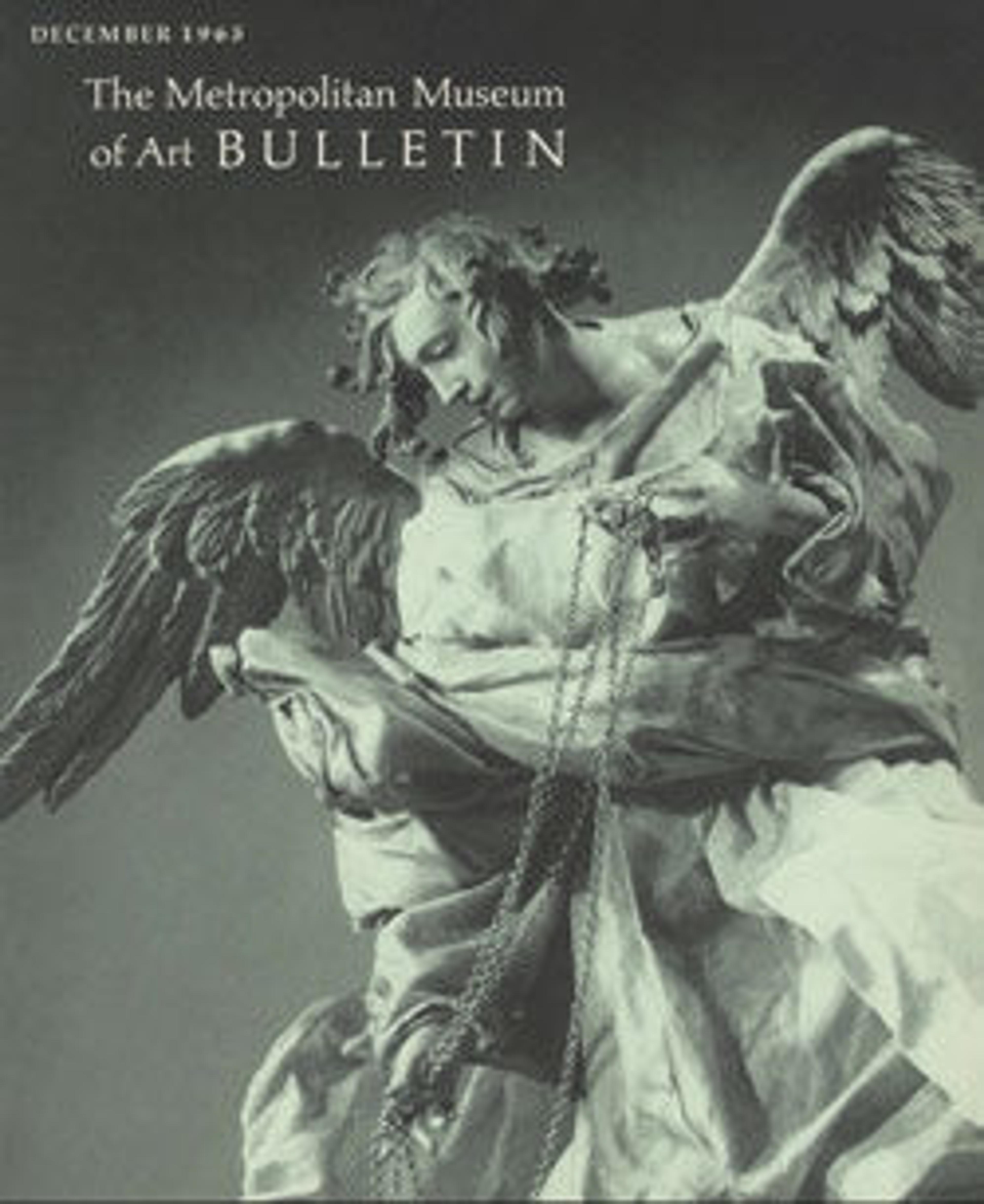Man
In 1964, Loretta Hines Howard generously presented to the Museum over 140 Neapolitan crèche figures, dating from the second half of the eighteenth century. The varied assortment includes figures from the three traditional scenes of a complete Neapolitan presepio: the Nativity, with angels, shepherds, and sheep; the procession of the three Magi, with their colorful retinue of attendants; and the varied and gay crowd of country and town people thronging the tavern, or inn, of Bethlehem — the diversorium mentioned by St. Luke, where on the Holy Night there was no place for Mary and Joseph. Averaging between twelve and fifteen inches in height, according to the position they were to take in perspective in the stage set, the figures are pliable and can be given poses at will, according to their facial expressions. Their bodies are made of tow and wire, their arms and legs are finely carved of wood, and their heads and shoulders are modeled of terracotta and accurately finished. Their attire, often enriched by accessories, jewels, and embroideries, is a sheer joy for the lover of folklore and eighteenth-century costumes.
According to a tradition that seems to be supported by stylistic comparisons with figures in the collections of Naples and in the vast holdings of the Bavarian National Museum in Munich, some of the winsome heads of the Howard angels are to be credited to the best eighteenth-century masters: Giuseppe Sammartino (1720–1793), well known for his monumental sculptures in marble and in stucco, his pupils Salvatore di Franco, Giuseppe Gori, and Angelo Viva, and one Lorenza Mosca (d. 1789), who was employed at the Royal Porcelain Factory at Capodimonte and stage director of the Royal Christmas Crib.
Since Mrs. Howard's gift, the Museum has recreated the Neapolitan Christmas crib scene, much to the delight of visitors during the holiday season.
According to a tradition that seems to be supported by stylistic comparisons with figures in the collections of Naples and in the vast holdings of the Bavarian National Museum in Munich, some of the winsome heads of the Howard angels are to be credited to the best eighteenth-century masters: Giuseppe Sammartino (1720–1793), well known for his monumental sculptures in marble and in stucco, his pupils Salvatore di Franco, Giuseppe Gori, and Angelo Viva, and one Lorenza Mosca (d. 1789), who was employed at the Royal Porcelain Factory at Capodimonte and stage director of the Royal Christmas Crib.
Since Mrs. Howard's gift, the Museum has recreated the Neapolitan Christmas crib scene, much to the delight of visitors during the holiday season.
Artwork Details
- Title:Man
- Maker:Lorenzo Mosca (died 1789)
- Date:second half 18th century
- Culture:Italian, Naples
- Medium:Polychromed terracotta head and wooden limbs; body of wire wrapped in tow; cotton and silk garments with silver thread-wrapped buttons; leather belt with gold buckle
- Dimensions:H. 15 7/8 in. (40.3 cm.)
- Classification:Crèche
- Credit Line:Gift of Loretta Hines Howard, 1964
- Object Number:64.164.101
- Curatorial Department: European Sculpture and Decorative Arts
More Artwork
Research Resources
The Met provides unparalleled resources for research and welcomes an international community of students and scholars. The Met's Open Access API is where creators and researchers can connect to the The Met collection. Open Access data and public domain images are available for unrestricted commercial and noncommercial use without permission or fee.
To request images under copyright and other restrictions, please use this Image Request form.
Feedback
We continue to research and examine historical and cultural context for objects in The Met collection. If you have comments or questions about this object record, please contact us using the form below. The Museum looks forward to receiving your comments.
